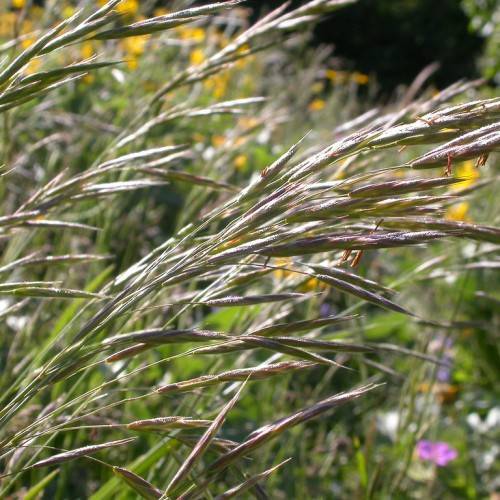
Mountain Brome
Bromus sitchensis var. marginatus
Watering:
Average
Hardiness Zone:
Sun:
full sun,part shade
Leaf:
Yes
Growth Rate:
Low
Salt Tolerant:
Yes
Thorny:
Yes
Invasive:
Yes
Care Level:
Moderate
watering
Aleut Brome should be watered regularly to ensure optimal health and growth. Water the plant when the top 2-3" of soil has dried out, about once a week during the growing season and every 2 weeks when it is dormant. Too much water can lead to root rot so water only when necessary and avoid getting any foliage wet. Be sure to use lukewarm water when watering to reduce the risk of shock to the plant.
sunlight
Aleut Brome(Bromus sitchensis var. aleutensis) thrives in sunny areas with 6 to 8 hours of direct sunlight per day. In the summer, plants should be grown in full sun, while during the winter, they may benefit from some protection from strong midday sun, such as using shade cloth or an evergreen tree. This plant species can also tolerate partial shade, but increased exposure to direct sunlight will produce the best growth and flower displays.
pruning
Aleut Brome should be pruned in late spring, before it flowers, to enable the plant to focus its energy on new growth. Prune by cutting back the stems to a height of 8-12 inches (20-30 cm). Remove any dead or damaged stems and dispose of them away from the plant. Pruning encourages the presence of new, healthy growth and can help prevent certain diseases from occurring. Pruning should be done yearly if desired, as more drastic cutting of this plant may cause it to become floppy or leggy.
